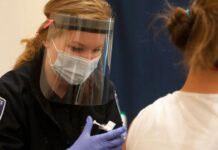Emergency medicine relies on gut instinct and intuition. Every adrenaline-fueled decision is based upon what we as emergency medical providers have learned and experienced in the past. This evolutionary instinct is sometimes helpful—when we deem a scene unsafe to enter or recognize the signs of a serious medical condition—but is nearly always marred with implicit biases.1,2 How do we reconcile the innate human impulse for judgment based upon mental shortcuts with the fact that these heuristics bring dangerous bias to our medical care, often to the detriment of our patients?
It’s a big question, one that we at Dartmouth EMS began to grapple with in May of 2020. As the Black Lives Matter movement sprawled across national headlines following the deaths of Ahmaud Arbery and George Floyd, our Dartmouth community was served a harsh reminder of the state of racial inequity and injustice permeating virtually every structure of American society. Like so many other medical professionals, we as members of Dartmouth EMS engaged in self-reflection and determined it was imperative to re-evaluate our role as providers of conscious, anti-racist healthcare.
We learned that Black, Hispanic, and Asian patients are routinely denied access to pain medications3,4; that non-White patients are often transported to different hospitals than White patients of the same zip code5; that pulse oximetry devices may deliver lower accuracy measurements for dark-skinned patients compared to light-skinned patients.6–8
As emergency medical providers, it is our responsibility to assess a patient’s condition and determine the necessary care. It would be negligent to fail to acknowledge our implicit biases, which we bring to every call. As such, we must actively decrease our bias to deliver more conscious care and integrate anti-racist practices into the fabric of our organization. Social justice cannot be an afterthought: racism permeates the lived experience of countless individuals.
As we continue to contemplate the positions and privileges we hold, we must be committed not just as EMTs but as community leaders and advocates to driving meaningful structural change. This article outlines the steps which Dartmouth EMS has taken to educate our members on socially just and racially inclusive emergency medicine. Our work is far from over, and our methods are far from perfect. Therefore, we welcome any feedback and suggestions for improvement.
About Darthmouth EMS
Dartmouth EMS is a student-run, non-transport, Basic Life Support squad licensed by the state of New Hampshire. We were founded in 1991 by a group of motivated students looking to improve pre-hospital care and education for the local community. Over the years, we have expanded to provide a variety of services to Dartmouth College and the surrounding Upper Valley community including campus emergency response, community CPR and First Aid training, maintenance of the Dartmouth public-access AED program, and event standby coverage.
Every fall, Dartmouth students are invited to apply for membership to Dartmouth EMS. In 2020, we received 73 applications and accepted a new member class of 28 first- and second-year students. All Dartmouth EMS members are trained to provide life-saving interventions, about half leading shifts as licensed EMTs.
Our organization fails to adequately represent the demographic profile of the Dartmouth student body. Upon rough estimation, a disproportionately large percentage of the Dartmouth EMS membership are of Caucasian or Asian American descent, whereas a disproportionately small percentage are of African American, Latino, or Native American descent. We recognize that this is unacceptable and likely detrimental to the quality of care which we deliver to our patients.
The Dartmouth EMS Social Justice Committee (SJC) was founded in September of 2020, to be composed of a small group of self-selecting members passionate about the subject matter. The SJC has three overarching goals: (1) to engage Dartmouth EMS members in meaningful discussions of race and inequity in medicine, (2) to minimize bias and discrimination in the Dartmouth EMS new member recruitment process, and (3) to promote structural change in the emergency medical field such that anti-racist practices become the norm rather than the exception. These initiatives are in their infancy; we are constantly iterating and innovating in response to academic literature, news articles, and constructive feedback.
Training Program
The SJC first sought to increase awareness of and open dialogue about the scientific evidence of bias in medicine through a training session for the Dartmouth EMS membership. Our first training session occurred in November of 2020 and was attended by most Dartmouth EMS members. We began by prompting participants to take the Implicit Association Test (IAT) from Harvard University, which “measures the strength of associations between concepts (e.g., black people, gay people) and evaluations (e.g., good, bad) or stereotypes (e.g., athletic, clumsy). The main idea is that making a response is easier when closely related items share the same response key”.9 We opened with this activity to highlight the unconscious manifestations of bias and thus the importance of addressing the topic as healthcare providers.
Next, participants were rotated through small-group breakout rooms on Zoom focused around six topics: diversity within the EMS profession,10 the racial maternal mortality gap,11-13 perceptions of pain tolerance,14-16 skin color and biased symptoms,17-18 disparities in cardiac arrest care,19-22 and the physiological effects of racial bias.23 In each breakout room, a member of the social justice committee gave a short presentation, followed by a group discussion. The small size of these discussions (about eight participants) was critical for allowing all individuals the time and comfort to speak openly. The full group was then brought together for a wrap-up on the major takeaways from the breakout room discussions, the implications of the IAT, and future steps we can take to minimize the influence of bias in our medical care. For example, we now incorporate inclusive skin evaluations into our weekly internal training sessions, ensuring that our members are equipped to recognize critical symptoms on skin of all shades.
During December of 2020, when all Dartmouth students are on break from classes, the SJC initiated further engagement with issues of social justice in emergency medicine by hosting casual Sunday afternoon discussions. Each week, the SJC chose a relevant TED talk, lecture, and/or news video for interested Dartmouth EMS members (usually about eight members) to collectively watch and connect to our role as prehospital healthcare providers.
Our second Zoom training session occurred in March of 2020. We maintained the small group learning and discussion format as implemented in the first Zoom training session, with three breakout rooms each focusing on a unique topic: implicit bias in triage,24-25 distrust in medicine within communities of color,26-28 and gaps in healthcare for transgender patients.29-31 The training concluded with a full-group brainstorm of new member recruitment methods, allowing all participating members of Dartmouth EMS to contribute their thoughts and ideas for admitting a class of new members representative of the demographic makeup of the Dartmouth student body. Moving forward, all applications for membership will be reviewed anonymously to address potential implicit bias based on the name of applicants. In addition, we aimed to build connections with on-campus organizations which support students from under-represented backgrounds, such that all students have access to information about membership opportunities.
Following each training and discussion session, we gathered and thoroughly reviewed anonymous feedback to be implemented into the structure of future programming. Overall, our initiatives were well received by the membership and the opportunities for small-group discussion were frequently cited as the most effective aspect of the programs. Multiple participants suggested that the SJC facilitators be clearer when relating broad trends in the medical field to our day-to-day work as healthcare providers with Dartmouth EMS, valuable feedback which we are working to implement moving forward.
Outstanding Challenges
Social justice in EMS is a field in its infancy—so when we set out to review the scholarly literature on the topic, we found few results. Without literature precedent and evidence-based strategies specifically tuned towards our profession, we had to get creative and extrapolate. Often, we drew on research pertaining to physicians and attempted to make compelling connections to prehospital care, with successful but imperfect results. In order to demonstrate clearly the importance of social justice awareness and improvement in EMS, it is necessary to draw on high-quality research taken directly from the prehospital field. Therefore, more research must be conducted to elucidate the impact of racial bias on patient experience and health outcomes in the prehospital setting, develop an evidence-based anti-racist training program tailored to medical first responders, and quantitatively evaluate the efficacy of the program.
The process of selecting specific topics to cover during training came with tough decision making. Given how many unique social issues exist in the medical field, we were tasked with prioritizing which topics seemed most pertinent and relevant to our organization. It was important for us to choose issues which were accessible to a wide range of Dartmouth EMS members, as every individual is at a unique place in their journey of learning and growth. Due to the intersectional nature of social justice issues in medicine, we had to accept that our discussions could not feasibly cover all the nuances and multitude of factors at play. SJC facilitators also encountered pushback from well-intentioned individuals who questioned the practical applications of our social justice initiative. These students brought up the important point that, even if our state protocols contain implicit bias and coded language for White favoritism, we unfortunately are legally bound to work within these protocols. This is a frustrating truth which applies to nearly all fields: large regulatory institutions wield control over the standardized protocols, lengthening the path towards change.
Concluding Remarks
As emergency medical providers, it is our responsibility to assess a patient’s condition and determine the necessary care. It would be negligent to fail to acknowledge our implicit biases, which we bring to every call. As such, we must actively decrease our bias to deliver more conscious care and integrate anti-racist practices into the fabric of our organization.
Dartmouth EMS has developed a training curriculum and initiated organizational reforms to promote socially just and racially inclusive emergency medicine. Our work is far from over and our methods will never be perfect. We welcome any feedback and suggestions for improvement.
Issues of social justice and inequality in emergency medicine are not just relevant during periods of national racial reckoning. Every single day, patients die as a result of entrenched discrimination in the American healthcare system and biases of individual emergency medical providers. It is imperative that all collegiate emergency medical agencies—and the broader emergency medical community—take concrete steps towards anti-racist healthcare.
References
- Starr D. Meet the psychologist exploring unconscious bias—and its tragic consequences for society. Science Mag. Published 2020 Mar. 26. Available from: https://www.sciencemag.org/news/2020/03/meet-psychologist-exploring-unconscious-bias-and-its-tragic-consequences-society.
- Bonabeau E. Don’t Trust Your Gut. Harvard Business Review. Published 2003 May. Available from: https://hbr.org/2003/05/dont-trust-your-gut.
- Soares WE III, Knowles KJ II, Friedmann PD. A Thousand Cuts: Racial and Ethnic Disparities in Emergency Medicine. Med Care. 2019;57(12):921-923.
- Todd KH, Deaton C, D’Adamo AP, Goe L. Ethnicity and analgesic practice. Ann Emerg Med. 2000;35(1):11-16. doi:10.1016/s0196-0644(00)70099-0.
- Hanchate AD, Paasche-Orlow MK, Baker WE, Lin MY, Banerjee S, Feldman J. Association of Race/Ethnicity With Emergency Department Destination of Emergency Medical Services Transport. JAMA Netw Open. 2019;2(9):e1910816. Published 2019 Sep 4.
- Sjoding MW, Dickson RP, Iwashyna TJ, Gay SE, Valley TS. Racial Bias in Pulse Oximetry Measurement. N Engl J Med, 2020;383(25):2477-2478.
- Feiner JR, Severinghaus JW, Bickler PE. Dark skin decreases the accuracy of pulse oximeters at low oxygen saturation: the effects of oximeter probe type and gender. Anesth Analg. 2007;105(6 Suppl):S18-23.
- U.S. FDA. Pulse Oximeter Accuracy and Limitations: FDA Safety Communication. Published 2021 Feb 19. Available from: https://www.fda.gov/medical-devices/safety-communications/pulse-oximeter-accuracy-and-limitations-fda-safety-communication?utm_medium=email&utm_source=govdelivery.
- Project Implicit. Harvard University, 2011. Available from: https://implicit.harvard.edu/implicit/takeatest.html.
- Williams JP. Diversity Emergency. U.S. News & World Report. 2019 Aug 19. Available from: https://www.usnews.com/news/healthiest-communities/articles/2019-08-19/diversity-emergency-women-minorities-underrepresented-in-ems
- MacDorman MF, Thoma M, Declcerq E, Howell EA. Racial and Ethnic Disparities in Maternal Mortality in the United States Using Enhanced Vital Records, 2016‒2017. Am J Public Health. 2021 Sep;111(9):1673-1681. doi: 10.2105/AJPH.2021.306375. Epub 2021 Aug 12. PMID: 34383557; PMCID: PMC8563010.
- Hoyert DL. Maternal mortality rates in the United States, 2019. NCHS Health E-Stats. 2021. DOI: https://doi.org/10.15620/cdc:103855.
- Pregnancy Mortality Surveillance System. U.S. Centers for Disease Control and Prevention. U.S. Department of Health & Human Services. Available from: https://www.cdc.gov/reproductivehealth/maternal-mortality/pregnancy-mortality-surveillance-system.htm.
- Goyal MK, Kuppermann N, Cleary SD, Teach SJ, Chamberlain JM. Racial Disparities in Pain Management of Children With Appendicitis in Emergency Departments. JAMA Pediatr. 2015;169(11):996-1002. doi:10.1001/jamapediatrics.2015.1915
- Sabin JA, Greenwald AG. The influence of implicit bias on treatment recommendations for 4 common pediatric conditions: pain, urinary tract infection, attention deficit hyperactivity disorder, and asthma. Am J Public Health. 2012;102(5):988-995. doi:10.2105/AJPH.2011.300621
- Hoffman KM, Trawalter S, Axt JR, Oliver MN. Racial bias in pain assessment and treatment recommendations, and false beliefs about biological differences between blacks and whites. Proc Natl Acad Sci U S A. 2016;113(16):4296-4301. doi:10.1073/pnas.1516047113
- Adelekun A, Onyekaba G, Lipoff JB. Skin color in dermatology textbooks: An updated evaluation and analysis. J Am Acad Dermatol. 2021 Jan;84(1):194-196. doi: 10.1016/j.jaad.2020.04.084. Epub 2020 Apr 23. PMID: 32335181.
- Gilman SA. Too Many Doctors Are Misdiagnosing Disease on Skin of Color. Everyday Health. 2021 Sep 27. Available from: https://www.everydayhealth.com/black-health/too-many-doctors-are-misdiagnosing-disease-on-skin-of-color/
- Becker LB, Han BH, Meyer PM, Wright FA, Rhodes KV, Smith DW, Barrett J. Racial differences in the incidence of cardiac arrest and subsequent survival. The CPR Chicago Project. N Engl J Med. 1993 Aug 26;329(9):600-6.
- Galea S, Blaney S, Nandi A, Silverman R, Vlahov D, Foltin G, Kusick M, Tunik M, Richmond N. Explaining racial disparities in incidence of and survival from out-of-hospital cardiac arrest. Am J Epidemiol. 2007 Sep 1;166(5):534-43.
- Merchant RM, Becker LB, Yang F, Groeneveld PW. Hospital racial composition: a neglected factor in cardiac arrest survival disparities. Am Heart J. 2011;161(4):705-711.
- Wilde ET, Robbins LS, Pressley JC. Racial differences in out-of-hospital cardiac arrest survival and treatment. Emerg Med J. 2012 May;29(5):415-9.
- Penner LA, Blair IV, Albrecht TL, Dovidio JF. Reducing Racial Health Care Disparities: A Social Psychological Analysis. Policy Insights from the Behavioral and Brain Sciences. 2014;1(1):204-212.
- Vigil JM, Coulombe P, Alcock J, et al. Patient Ethnicity Affects Triage Assessments and Patient Prioritization in U.S. Department of Veterans Affairs Emergency Departments. Medicine (Baltimore). 2016;95(14):e3191.
- López L, Wilper AP, Cervantes MC, Betancourt JR, Green AR. Racial and sex differences in emergency department triage assessment and test ordering for chest pain, 1997-2006. Acad Emerg Med. 2010 Aug;17(8):801-8.
- Armstrong K, Ravenell KL, McMurphy S, Putt M. Racial/ethnic differences in physician distrust in the United States. Am J Public Health. 2007 Jul;97(7):1283-9.
- Nguyen TC, Gathecha E, Kauffman R, Wright S, Harris CM. Healthcare distrust among hospitalised black patients during the COVID-19 pandemic. Postgrad Med J. 2021 Sep 29.
- Armstrong K, McMurphy S, Dean LT, Micco E, Putt M, Halbert CH, Schwartz JS, Sankar P, Pyeritz RE, Bernhardt B, Shea JA. Differences in the patterns of health care system distrust between blacks and whites. J Gen Intern Med. 2008 Jun;23(6):827-33.
- Grant JM, Mottet LA, Tanis J, Harrison J, Herman JL, Kiesling M. Injustice at every turn: a report of the National Transgender Discrimination Survey. Washington, DC: National Center for Transgender Equality and National Gay and Lesbian Task Force; 2011.
- Cobos DG, Jones J. Moving forward, transgender persons as change agents in health care access and human rights. J Assoc Nurses AIDS Care. 2009;20(5):341-47.
- Providing Affirmative Care for Patients with Non-binary Gender Identities. Boston, MA: National LGBT Health Education Center, Fenway Institute. Available from: https://www.lgbtqiahealtheducation.org/wp-content/uploads/2017/02/Providing-Affirmative-Care-for-People-with-Non-Binary-Gender-Identities.pdf
Author & Article Information
Brittany Cleary, EMT (she/her/hers) is a June 2021 graduate of Dartmouth College and the former Executive Director of Dartmouth EMS. Jannelle Annor is a student at Dartmouth College and member of Dartmouth EMS. Sarah Barnett, EMT is a June 2021 graduate of Dartmouth College, where she was a member of Dartmouth EMS. Regan Harnois is a student at Dartmouth College and member of Dartmouth EMS. Jay Kang is a student at Dartmouth College and member of Dartmouth EMS. Sahaj Shah is a June 2021 graduate of Dartmouth College, where he was a member of Dartmouth EMS. Leah Zamansky is a student at Dartmouth College and member of Dartmouth EMS. Megan Zhou, EMT is a June 2021 graduate of Dartmouth College, where she was a member of Dartmouth EMS.
Author Affiliations: From Dartmouth College – in Hanover, NH (B.C., J.A., S.B., R.H., J.K, S.S., L.Z., M.Z.).
Address for Correspondence: Brittany Cleary | Email: Brittany.M.Cleary.21@Dartmouth.edu
Conflicts of Interest/Funding Sources: By the JCEMS Submission Declaration Form, all authors are required to disclose all potential conflicts of interest and funding sources. All authors declared that they have no conflicts of interest. All authors declared that they did not receive funding to conduct the research and/or writing associated with this work.
Authorship Criteria: By the JCEMS Submission Declaration Form, all authors are required to attest to meeting the four ICMJE.org authorship criteria: (1) Substantial contributions to the conception or design of the work; or the acquisition, analysis, or interpretation of data for the work; AND (2) Drafting the work or revising it critically for important intellectual content; AND (3) Final approval of the version to be published; AND (4) Agreement to be accountable for all aspects of the work in ensuring that questions related to the accuracy or integrity of any part of the work are appropriately investigated and resolved.
Submission History: Received October 25, 2021; accepted for publication December 13, 2021
Published Online: February 25, 2022
Published in Print: February 25, 2022 (Volume 5: Issue 1)
Reviewer Information: In accordance with JCEMS editorial policy, Perspectives and Opinions manuscripts are reviewed by the JCEMS Editorial Board. JCEMS thanks the Editorial Board members who contributed to the review of this work.
Copyright: © 2022 Cleary, Annor, Barnett, Harnois, Kang, Shah, Zamansky & Zhou. This is an open access article distributed under the terms of the Creative Commons Attribution 4.0 International (CC BY 4.0) License, which permits unrestricted use, distribution, and reproduction in any medium, provided the original author and source are credited. The full license is available at: https://creativecommons.org/licenses/by/4.0/
Electronic Link: https://doi.org/10.30542/JCEMS.2022.05.01.01











